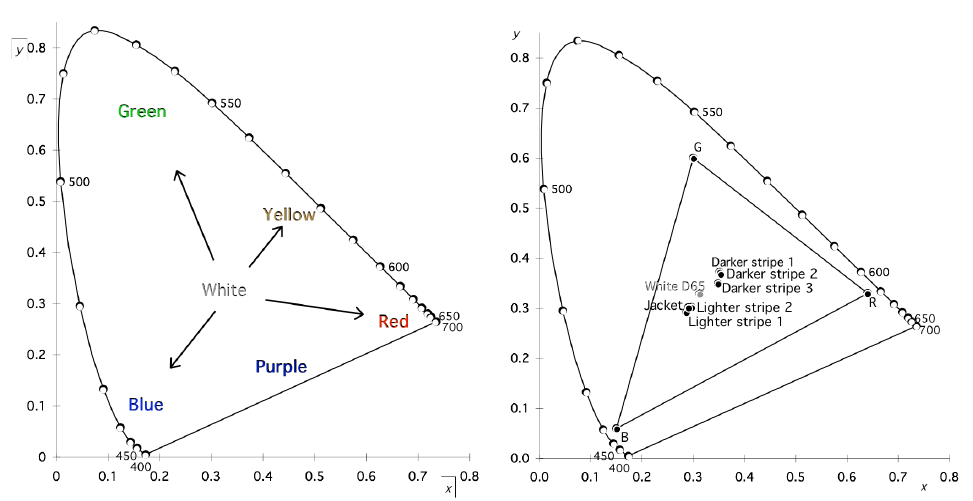
Left Figure: CIE 1931 x, y Chromaticity diagram, showing the chromaticity of colours in the spectrum (on the curve, running from 400 to 700 nanometres) and the purples got by mixing the extreme blue and red (on straight line closing the curve). Less saturated colours are inside the curve—I’ve inserted labels for the most salient regions, with arrows to show lines of increasing saturation from White towards the four ‘unique’ hues. Right Figure: Chromaticity of colours in the Dress photo. The triangle encloses the range of colours available on a standard computer screen. The darker stripes are very similar in chromaticity (a pale slightly orange yellow), and so are the lighter stripes and the jacket (a pale blue). I’ve inserted a standard white (D65) as a reference point. What we see depends on what we might call the white balance correction made in the visual system. If the visual system treats the brightest things in the field as white (something that Edwin Land, of Polaroid camera fame, favoured as a general hypothesis), then the jacket and the lighter stripes of the dress come out as white, and the darker stripes come out as gold, or orange-yellow (and one may have the impression of looking through a sort of bluish-tinge or sheen on the picture). (Think of drawing a line from the lower-left cluster of points to the upper-right cluster: the direction corresponds to a slightly orange yellow.) If the system treats the darker stripes as black (resetting the neutral point, so to speak, in the region of the upper right cluster of points) then the jacket and the lighter stripes come out as a moderately saturated blue. (Think of drawing a line from the upper-right cluster to the lower-left cluster: the direction (and distance) corresponds to a good blue.) But this is only a part of what we need to think about: e.g., there’s also the lightness (as well as colour) perception, and the spatial segmentation of the scene. (My calculations from the Photoshop RGB values given in WIRED.)
